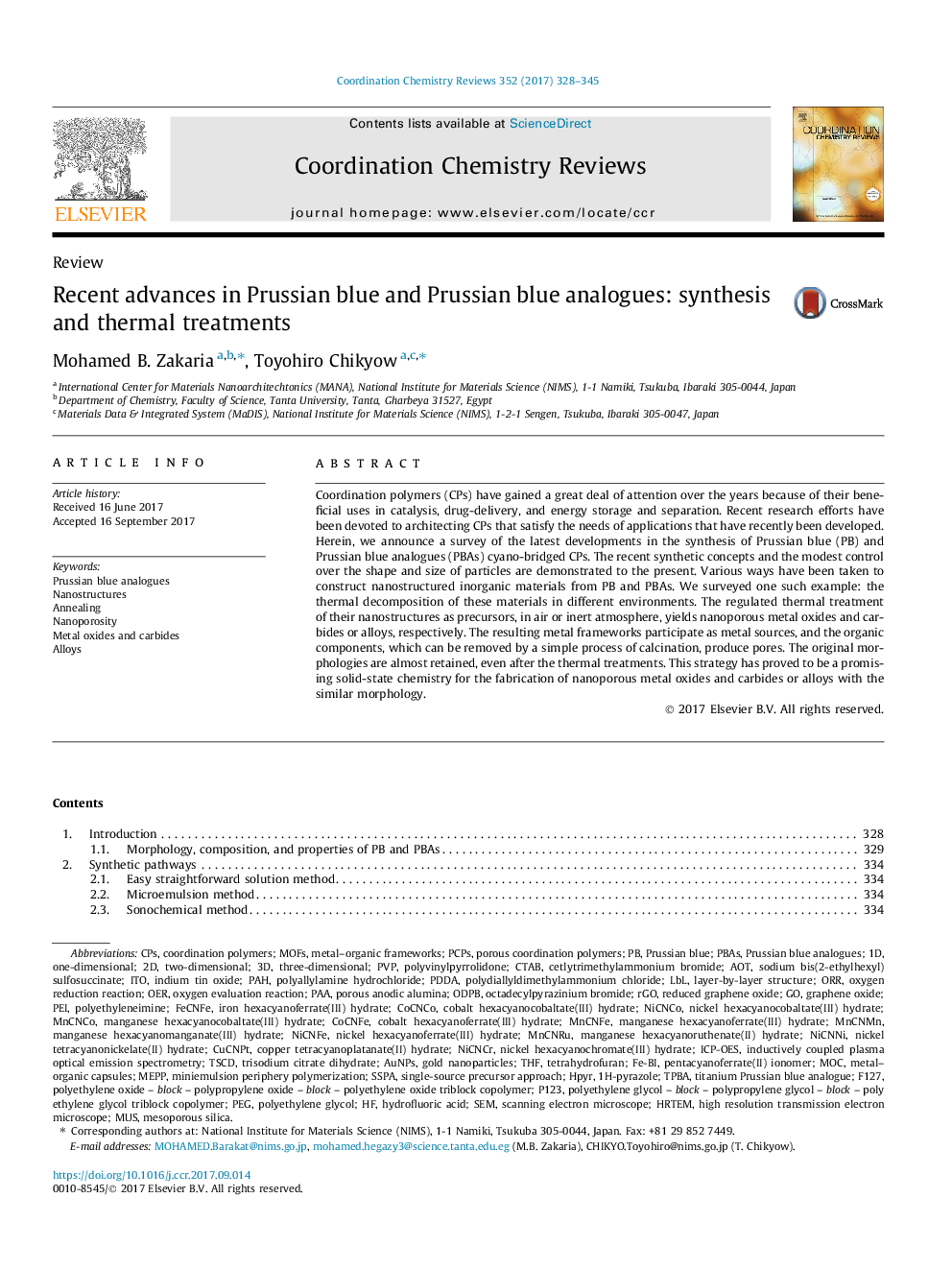| Article ID | Journal | Published Year | Pages | File Type |
|---|---|---|---|---|
| 5150664 | Coordination Chemistry Reviews | 2017 | 18 Pages |
Abstract
Coordination polymers (CPs) have gained a great deal of attention over the years because of their beneficial uses in catalysis, drug-delivery, and energy storage and separation. Recent research efforts have been devoted to architecting CPs that satisfy the needs of applications that have recently been developed. Herein, we announce a survey of the latest developments in the synthesis of Prussian blue (PB) and Prussian blue analogues (PBAs) cyano-bridged CPs. The recent synthetic concepts and the modest control over the shape and size of particles are demonstrated to the present. Various ways have been taken to construct nanostructured inorganic materials from PB and PBAs. We surveyed one such example: the thermal decomposition of these materials in different environments. The regulated thermal treatment of their nanostructures as precursors, in air or inert atmosphere, yields nanoporous metal oxides and carbides or alloys, respectively. The resulting metal frameworks participate as metal sources, and the organic components, which can be removed by a simple process of calcination, produce pores. The original morphologies are almost retained, even after the thermal treatments. This strategy has proved to be a promising solid-state chemistry for the fabrication of nanoporous metal oxides and carbides or alloys with the similar morphology.
Keywords
LbLPDDASspAHRTEMORROERTHFP123PAAcpsAOTPCPsMUSMOCmEPPF1271H-PyrazolePAHPEIICP-OESPolyallylamine hydrochlorideCTABPVPThree-dimensionalAuNPsMOFsrGOPrussian bluePorous anodic aluminaAlloysPrussian blue analoguesAnnealingInductively coupled plasma optical emission spectrometryhydrofluoric acidIndium tin oxideGraphene oxideReduced graphene oxideITOTetrahydrofurantwo-dimensionalLayer-by-layer structureSodium bis(2-ethylhexyl) sulfosuccinateMesoporous silicametal–organic frameworksSEMscanning electron microscopehigh resolution transmission electron microscopeNanoporosityGold nanoparticlesNanostructuresOxygen reduction reactionpolyethylene glycolpolyethyleneiminepolyvinylpyrrolidoneCoordination polymersPorous coordination polymersPolydiallyldimethylammonium chloridePEGone-dimensional
Related Topics
Physical Sciences and Engineering
Chemistry
Inorganic Chemistry
Authors
Mohamed B. Zakaria, Toyohiro Chikyow,
